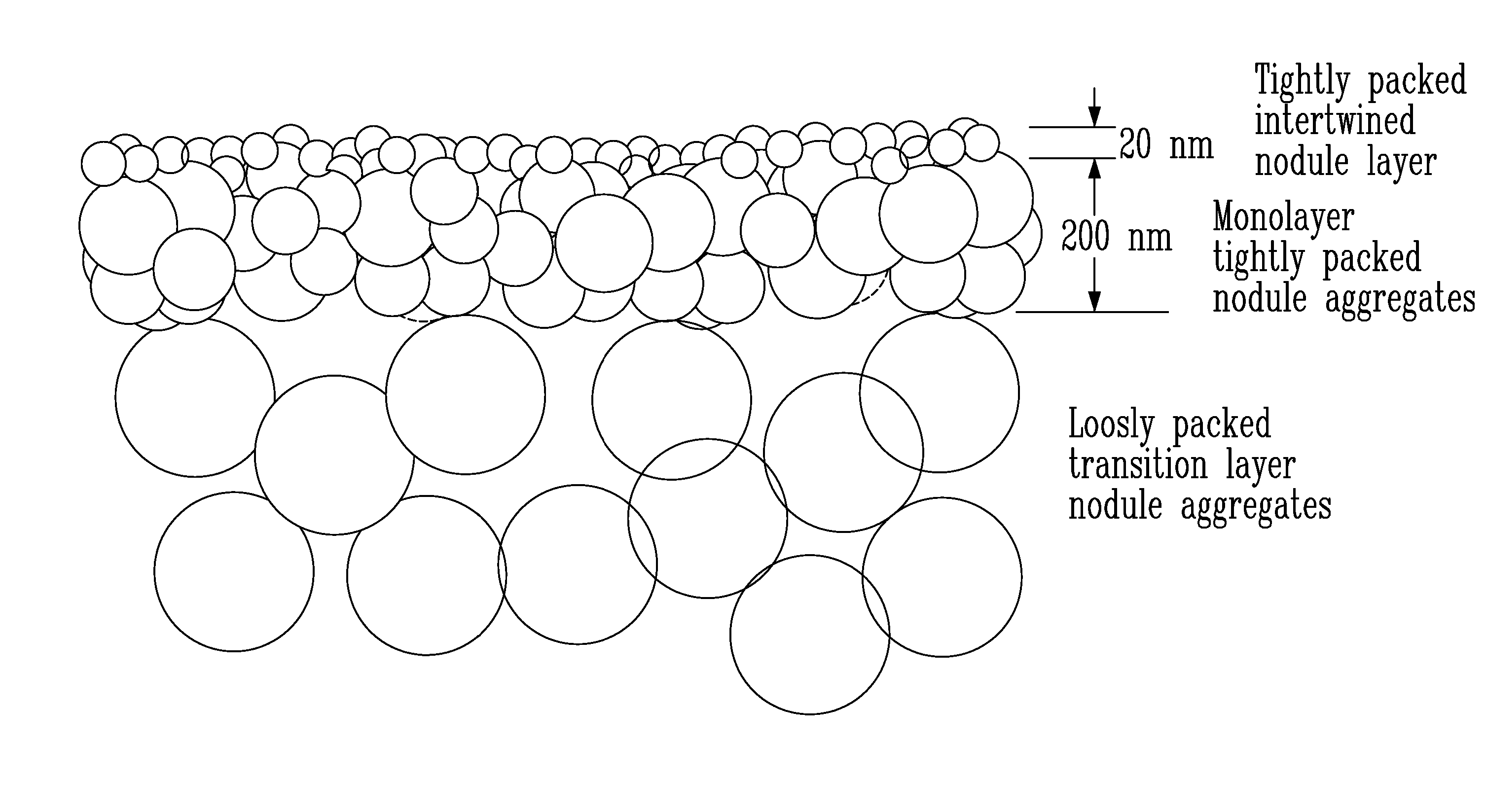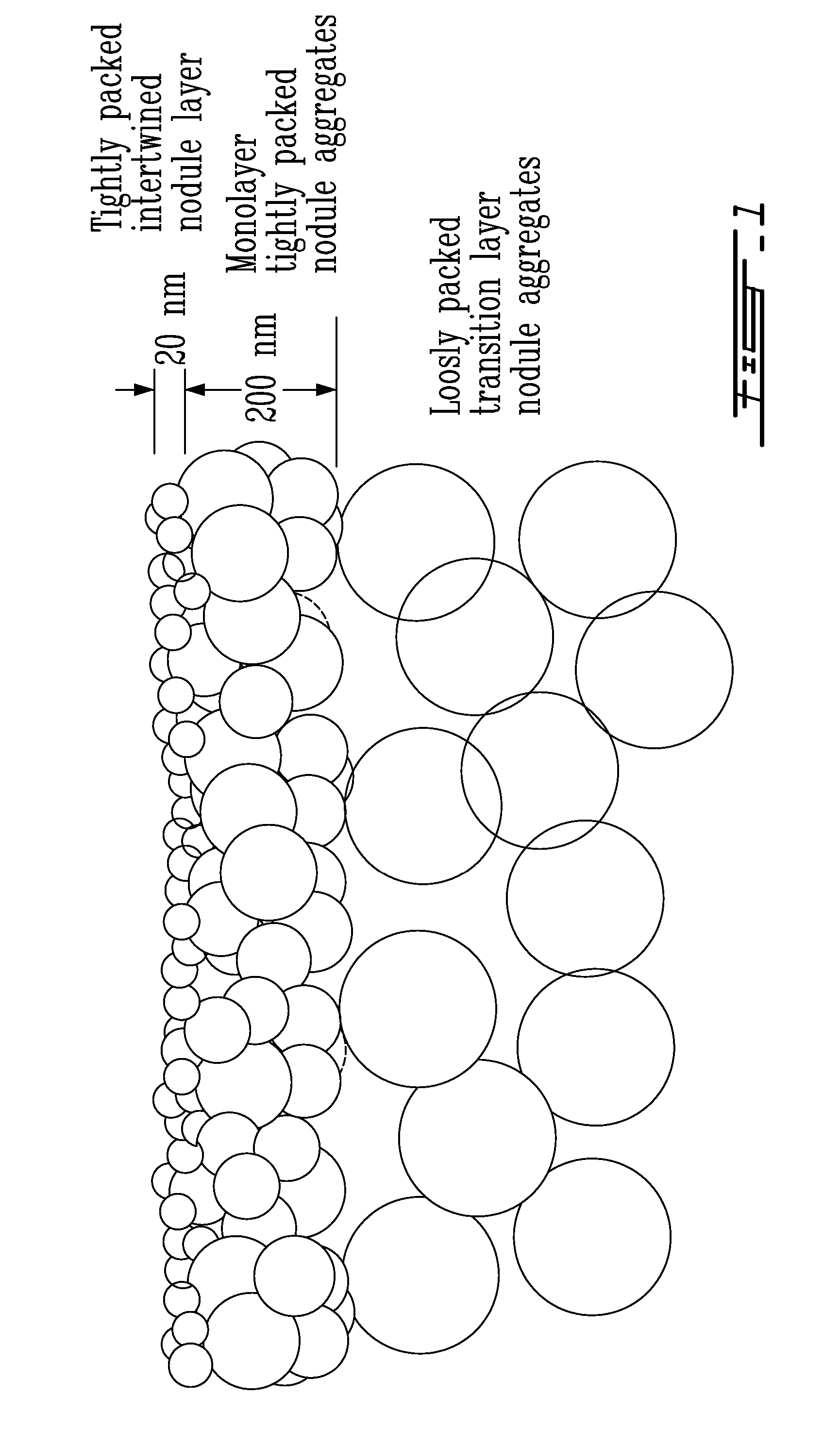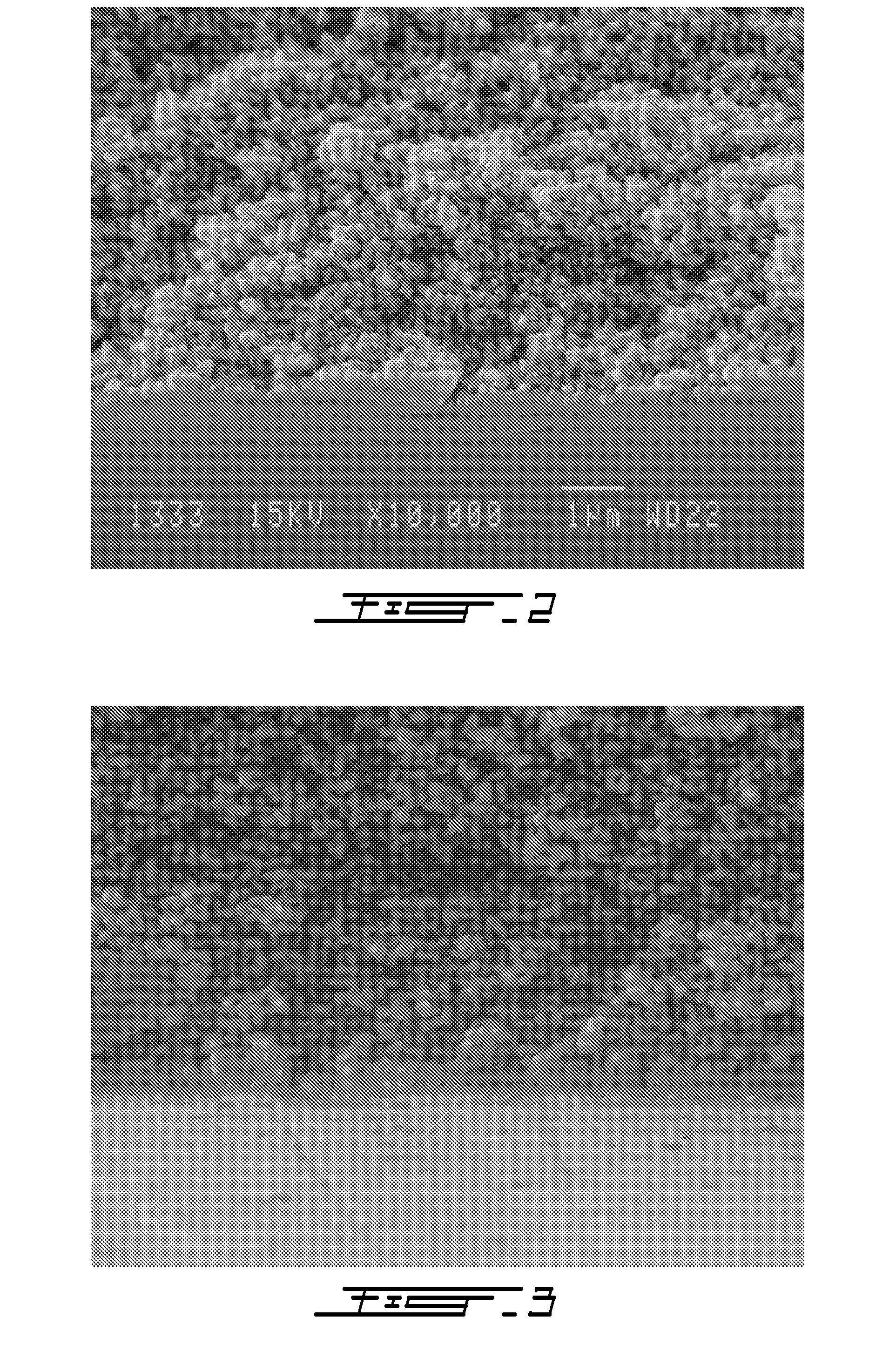Solvent resistant asymmetric integrally skinned membranes
a technology of asymmetric integral skin and solution, applied in the field of separation membrane, can solve the problems of reducing the efficiency of the membrane, and reducing the selectivity of the membrane, so as to reduce the emission of organic compounds, increase the chemical reaction driving force, and reduce energy consumption.
- Summary
- Abstract
- Description
- Claims
- Application Information
AI Technical Summary
Benefits of technology
Problems solved by technology
Method used
Image
Examples
examples
[0077] The following examples describe how to prepare the polyamic acid casting solutions, the capillary tubes and the membranes of the invention.
Casting Solution
Casting Solution A
[0078] A 19% by weight solution of a polyamic acid (PAA) was prepared from 4,4′-diaminodiphenyl ether (ODA) and benzophenone tetracarboxylic dianhydride (BTDA) in N-methylpyrrolidone (NMP) solvent. A solution containing 50% by weight of polyvinylpyrrolidone (PVP) in NMP was added to the PAA solution. Then glycerol and NMP were added to the solution. The final solution had a composition of PAA / PVP / GLY / NMP of 13 / 1 / 17 / 69 by weight. The solution was mixed for a period of about 12 hours prior to casting.
Casting Solution B
[0079] This solution was prepared according to the same protocole as mentioned above for the casting solution A with the exception that the proportions were different in order to provide a final composition having a PAA / PVP / GLY / NMP composition of 12 / 1 / 20 / 67 by weight.
Casting Solution C...
experiment 1
[0119] Membrane A was then tested with a vaporous feed stream of 22 wt % water, 68 wt % ethanol and 10 wt % fusel oil at 140° C. Feed was to the bore side of the capillary tube. The permeate pressure was maintained at 4.5 kPa by a vacuum pump downstream of a water cooled permeate condenser. The feed pressure was maintained at 200 kPa and there was negligible pressure drop across the membrane module. The results are given in Tables 2 and 3.
experiment 2
[0120] Membrane B was then tested with a vaporous feed stream of 95 wt % water and 5 wt % acetic acid at 95° C. Feed was to the bore side of the capillary tube. The permeate pressure was maintained at 7.5 kPa by a vacuum pump downstream of water cooled condenser. The feed pressure was maintained at 24 kPa by a vacuum pump downstream of water cooled retentate. The results are given in Tables 2, 3 and 5.
PUM
| Property | Measurement | Unit |
|---|---|---|
| temperature | aaaaa | aaaaa |
| diameter | aaaaa | aaaaa |
| temperature | aaaaa | aaaaa |
Abstract
Description
Claims
Application Information
 Login to View More
Login to View More - R&D
- Intellectual Property
- Life Sciences
- Materials
- Tech Scout
- Unparalleled Data Quality
- Higher Quality Content
- 60% Fewer Hallucinations
Browse by: Latest US Patents, China's latest patents, Technical Efficacy Thesaurus, Application Domain, Technology Topic, Popular Technical Reports.
© 2025 PatSnap. All rights reserved.Legal|Privacy policy|Modern Slavery Act Transparency Statement|Sitemap|About US| Contact US: help@patsnap.com



